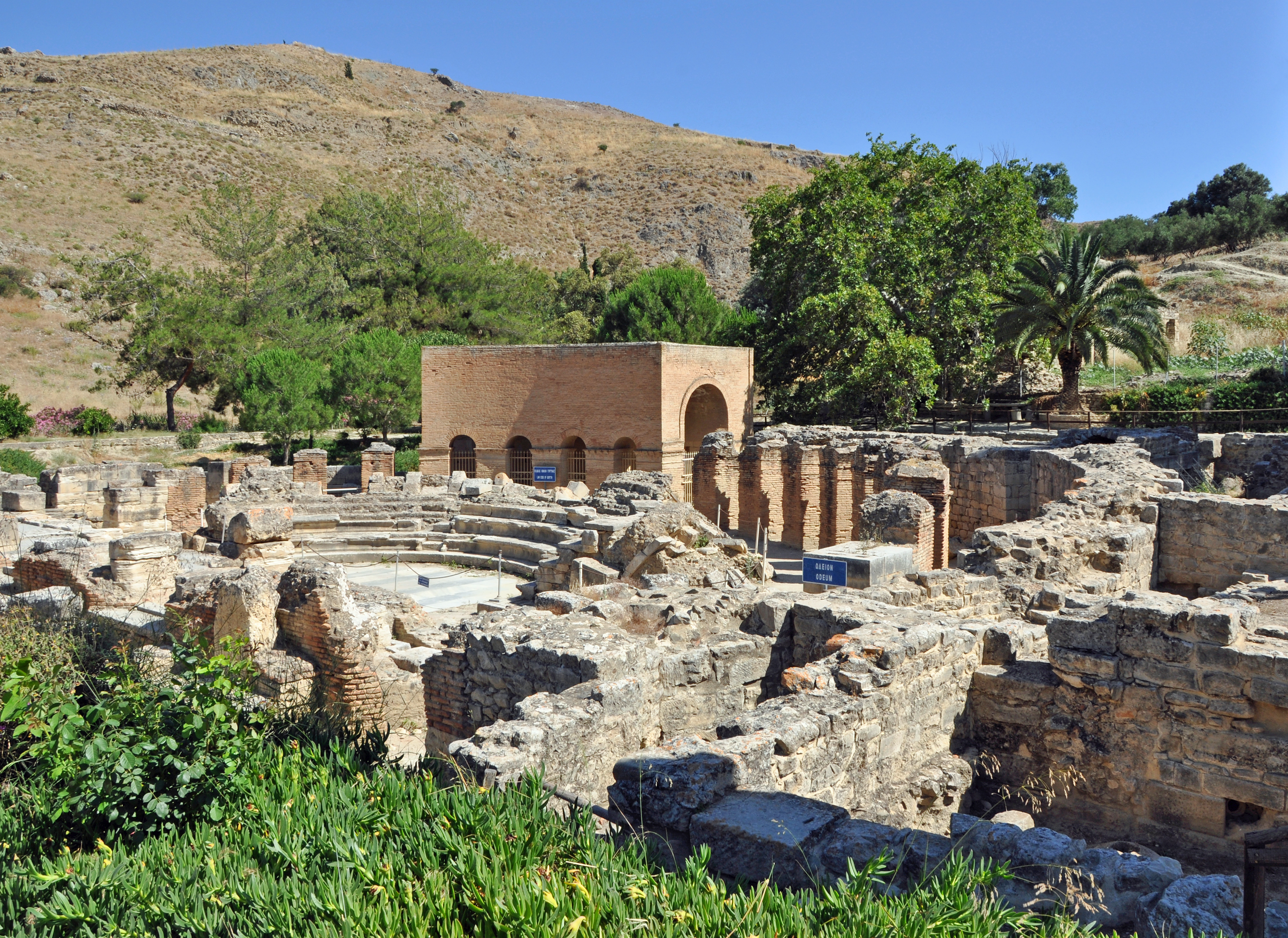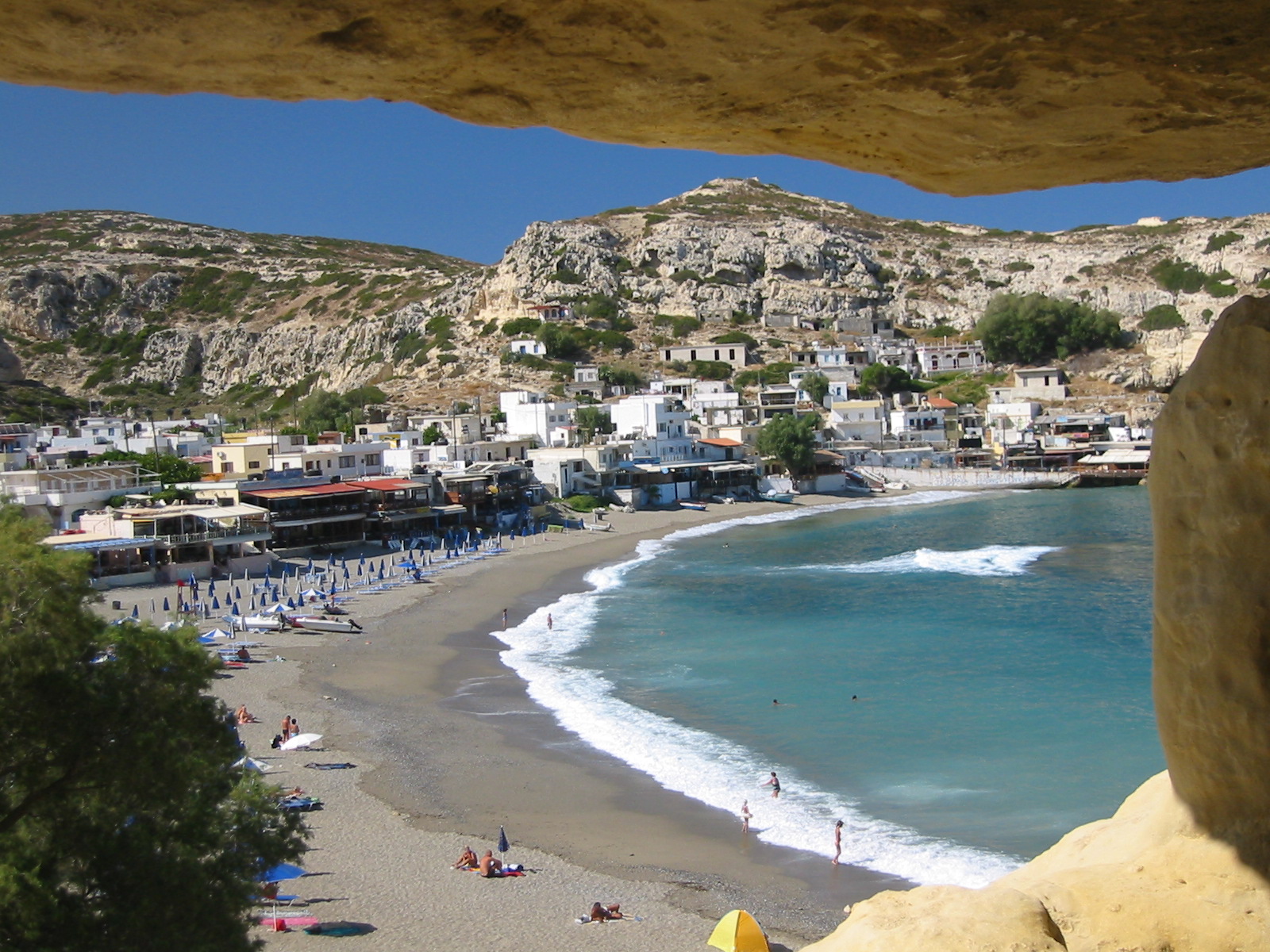|
Matalia
Matalia () was a town of ancient Crete near the headland of Matala (Μάταλα), and probably the same place as the port and naval arsenal of Gortyna called Metallum or Metallon (Μέταλλον) by Strabo Strabo''Strabo'' (meaning "squinty", as in strabismus) was a term employed by the Romans for anyone whose eyes were distorted or deformed. The father of Pompey was called "Gnaeus Pompeius Strabo, Pompeius Strabo". A native of Sicily so clear-si .... Its site is located near modern Matala. References Populated places in ancient Crete Former populated places in Greece {{AncientCrete-geo-stub ... [...More Info...] [...Related Items...] OR: [Wikipedia] [Google] [Baidu] |
Gortyna
Gortyna (; also known as Gortyn (Γορτύν)) was a town of ancient Crete which appears in the Homeric poems under the form of Γορτύν; but afterwards became usually Gortyna (Γόρτυνα). According to Stephanus of Byzantium it was originally called Larissa (Λάρισσα) and Cremnia or Kremnia (Κρήμνια). History This important city was next to Knossos in importance and splendour; in early times these two great towns had entered into a league which enabled them to reduce the whole of Crete under their power; in after-times when dissensions arose among them they were engaged in continual hostilities. It was originally of very considerable size, since Strabo reckons its circuit at 50 stadia (about , implying an area of about ); but when he wrote it was very much diminished. He adds that Ptolemy Philopator had begun to enclose it with fresh walls; but the work was not carried on for more than 8 stadia (about ). In the Peloponnesian War, Gortyna seems to have ha ... [...More Info...] [...Related Items...] OR: [Wikipedia] [Google] [Baidu] |
Ancient Crete
The history of Crete goes back to the 7th millennium BC, preceding the ancient Minoan civilization by more than four millennia. The Minoan civilization was the first civilization in Europe. During the Iron Age, Crete developed an Ancient Greece-influenced organization of city-states, then successively became part of the Roman Empire, the Byzantine Empire, the Venetian Republic, the Ottoman Empire, an autonomous state, and the modern state of Greece. Prehistoric Crete Excavations in South Crete in 2008–2009 revealed stone tools at least 130,000 years old, including bifacial ones of Acheulean type. This was a sensational discovery, as the previously accepted earliest sea crossing in the Mediterranean was thought to occur around 12,000 BC. This suggests that the island may have been visited by archaic humans during the Middle Pleistocene.T.F. Strasser, E. Panagopoulou, C.N. Runnels, P.M. Murray, N. Thompson, P. Karkanas, F.W. McCoy, K.W. WegmanStone Age seafaring in the Mediterra ... [...More Info...] [...Related Items...] OR: [Wikipedia] [Google] [Baidu] |
Stadiasmus Maris Magni
The ''Stadiasmus Maris Magni'' or ''Stadiasmus sive Periplus Maris Magni'' () is an ancient Roman periplus or guidebook detailing the ports sailors encounter on the shores of the Mediterranean Sea. The ''stadiasmus'' provides distances, sailing directions and descriptions of specific ports. It was written in Ancient Greek and survives in fragments. The work was written by an anonymous author and is dated to the second half of the third century AD. The most complete Greek text together with a Latin Latin ( or ) is a classical language belonging to the Italic languages, Italic branch of the Indo-European languages. Latin was originally spoken by the Latins (Italic tribe), Latins in Latium (now known as Lazio), the lower Tiber area aroun ... translation was published in 1855 by Karl Müller as part of his work '' Geographi Graeci Minores''. Karl Müllerbr>Anonymi Stadiasmus maris magniGeographi Graeci minores . Vol. 1, p. 427, 1828(Firmin-Didot, 1882) . References So ... [...More Info...] [...Related Items...] OR: [Wikipedia] [Google] [Baidu] |
Strabo
Strabo''Strabo'' (meaning "squinty", as in strabismus) was a term employed by the Romans for anyone whose eyes were distorted or deformed. The father of Pompey was called "Gnaeus Pompeius Strabo, Pompeius Strabo". A native of Sicily so clear-sighted that he could see things at great distance as if they were nearby was also called "Strabo". (; ''Strábōn''; 64 or 63 BC) was an ancient Greece, ancient Greek geographer who lived in Anatolia, Asia Minor during the transitional period of the Roman Republic into the Roman Empire. He is best known for his work ''Geographica'', which presented a descriptive history of people and places from different regions of the world known during his lifetime. Additionally, Strabo authored historical works, but only fragments and quotations of these survive in the writings of other authors. Early life Strabo was born to an affluent family from Amasya, Amaseia in Kingdom of Pontus, Pontus in around 64BC. His family had been involved in politics s ... [...More Info...] [...Related Items...] OR: [Wikipedia] [Google] [Baidu] |
Matala, Crete
Matala (Greek: Μάταλα) is a village located 75 km south-west of Heraklion, Crete, Greece. Matala is part of the community of Pitsidia within the municipal unit of Tympaki, Faistos municipality, Heraklion regional unit. History The artificial caves in the cliff of the Matala bay were created in the Neolithic Age. Matala was the port of Phaistos during the Minoan period. In the year 220 BC, Matala was occupied by the Gortynians, and during the Roman period, Matala became the port of Gortys Gortyna (; also known as Gortyn (Γορτύν)) was a town of ancient Crete which appears in the Homeric poems under the form of Γορτύν; but afterwards became usually Gortyna (Γόρτυνα). According to Stephanus of Byzantium it was or .... It has been suggested that the caves were once used as tombs, but it is more likely that they were used as living spaces, given their volume (corpses do not need that much room to walk around). One of the caves is called "Brut ... [...More Info...] [...Related Items...] OR: [Wikipedia] [Google] [Baidu] |
Populated Places In Ancient Crete
Population is a set of humans or other organisms in a given region or area. Governments conduct a census to quantify the resident population size within a given jurisdiction. The term is also applied to non-human animals, microorganisms, and plants, and has specific uses within such fields as ecology and genetics. Etymology The word ''population'' is derived from the Late Latin ''populatio'' (a people, a multitude), which itself is derived from the Latin word ''populus'' (a people). Use of the term Social sciences In sociology and population geography, population refers to a group of human beings with some predefined feature in common, such as location, race, ethnicity, nationality, or religion. Ecology In ecology, a population is a group of organisms of the same species which inhabit the same geographical area and are capable of interbreeding. The area of a sexual population is the area where interbreeding is possible between any opposite-sex pair within the are ... [...More Info...] [...Related Items...] OR: [Wikipedia] [Google] [Baidu] |




